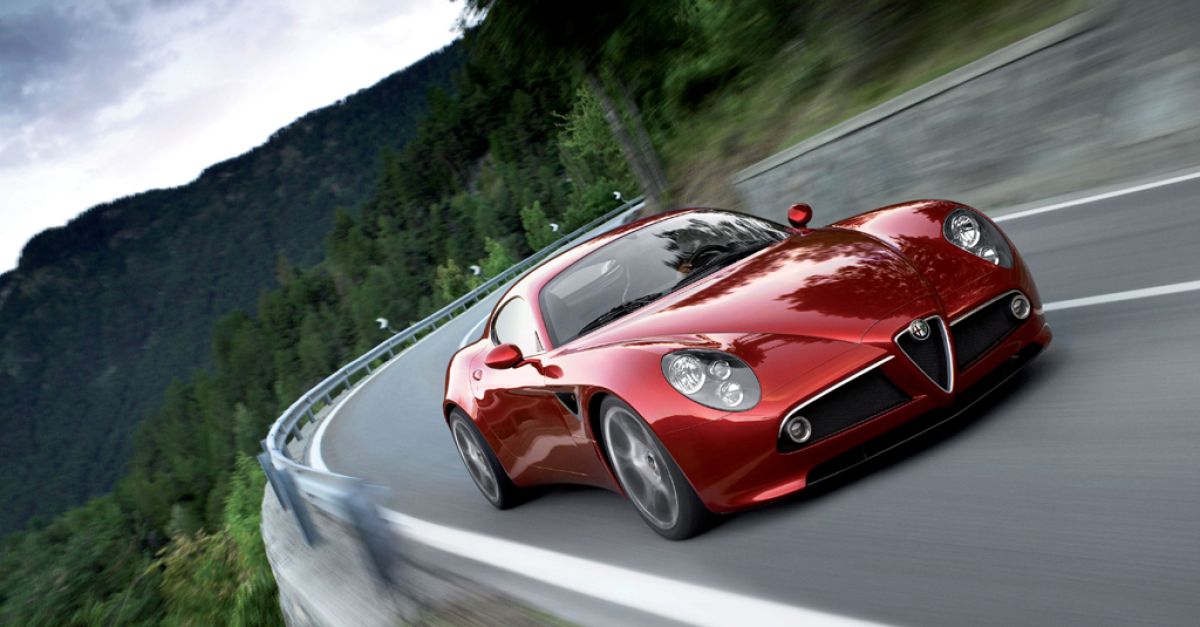
In its 112-year history, Alfa Romeo has introduced many exciting models, including the five sports dream cars that we present here.
the Alfa Romeo 112 years of history. The Milanese brand’s journey through time is marked by a sporting spirit that is expressed through racing as well as production cars. Some of them – usually in limited production – passed on to the automotive industry’s elite creations.
From the 8C that changed the course of racing in the 1930s, the dazzling 33 Stradale, then the eccentric Montreal and SZ/RZ to the 8C Competizione, these are the sporty Alfa Romeo models, whose brilliance remains unchanged in Stellantis’ heritage department.
Alfa Romeo 8C (1931)
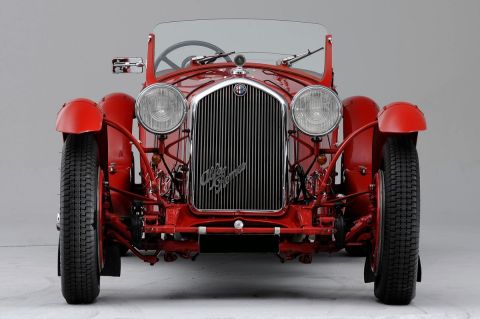
Alfa Romeo 8C 1931
stars
By the early 1930s, Alfa Romeo was already enjoying great racing and sales success thanks to the 6C series. Based on this, the marque’s management asked genius engineer Vittorio Giano to develop a more powerful inline-8 engine that could power a range of high-performance luxury cars.
It wasn’t long after the new lineup was created that, one year later, Yano added two more cylinders to the 6C engine, increasing the displacement to 2336 cu in, creating a new legend. The 8C 2300 was a real engine, and although the engine capacity was only 30% larger than the 6C 1750, the output was almost double at 155 hp instead of 85.
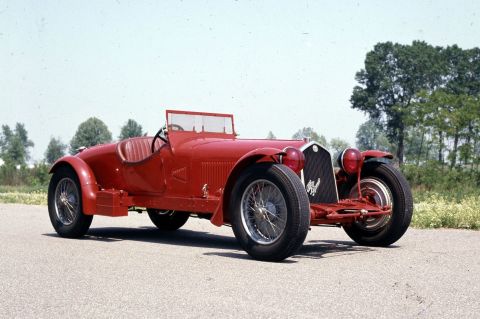
Alfa Romeo 8C 1931
stars
The 8C’s racing success came immediately, with Tazio Nuvolari winning the Targa Florio in 1931. Dozens of victories followed at the Mille Miglia, Monza, but also at the legendary Le Mans, where the 8C 2300 Le Mans special-event version weighed just 1,000 kg And it has a top speed of more than 200 km / h. In the 1931 race, Alfa Romeo won. The following year it finished first and second, while in 1933 the victory took on epic proportions, with 8C 2300 Le Mans taking all three podium spots and the 1934 model taking one final victory.
Of only the 188 8C 2300s built, 9 were Le Mans versions, with one preserved to this day by Stellantis’ heritage department. Alfa Romeo initially intended to produce the 8C series exclusively for racing, but soon began selling chassis and mechanical parts to individuals who then decked it out with the help of manufacturers such as Zagato, Carrozzeria Touring, Carrozzeria Castagna and Carrozzeria Pinin Farina. The lucky owners of this racing-born supercar include Baroness Mont Tessen of the Tessin family, Piaggio founder Andrea Piaggio and racing legend Tazio Nuvolari.
Alfa Romeo 33 Stradale (1967)
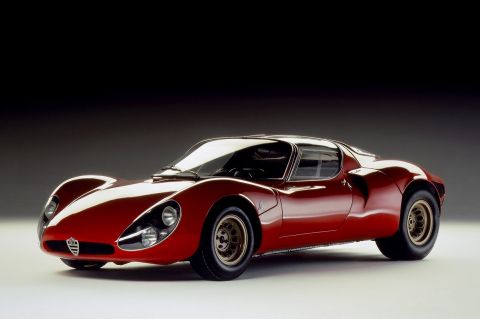
Alfa Romeo 33 Stradale 1967
© Alfa Romeo
The story of the 33 Stradale also begins with racing. The ’33’ family was born in the mid-60s with a mission to dominate racing. Over time, it gained many members, mostly healthy racers, while a series of prototypes highlighted the model’s adaptability, as well as the creativity of the designers.
The 33 Stradale was undoubtedly the most elegant and elegant example of the family, its unveiling in August 1967 captivating like nothing else offered in the motoring world up to that time. Its ingenious design is the creation of Florentine native Franco Scaglione, who used all his technical knowledge and aesthetic daring.
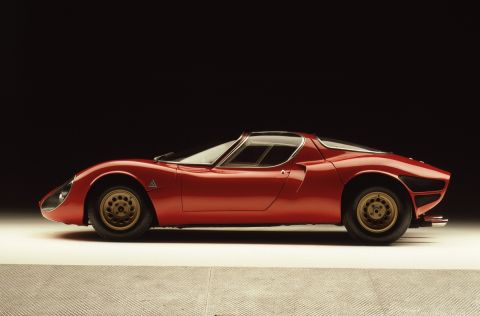
Alfa Romeo 33 Stradale 1967
© Alfa Romeo
The result is a true masterpiece in terms of style, performance and aerodynamic functionality. The 33 Stradale was also technologically innovative, because for the first time in a road car, the doors opened upwards, allowing easy access to the vehicle only a meter high.
The body almost stifles the tubular steel frame and the 2-liter V8 engine made of aluminum and magnesium, with an aerodynamic silhouette combined with the engine power of 230 hp and very low weight (about 700 kg) guarantee a top speed of 260 km / h and acceleration from 0-100 km/h in 5.5 in.
Only 18 unique 33 Stradales are born, each one a little different since they were built by hand. With an emphasis on proportions and volumes, rigorous lines and an imposing presence defined by elegance and poise rather than an easy impression, the 33 Stradale is a true supercar for its time, but also a timeless symbol and exemplary example of the Alfa Romeo philosophy.
Alfa Romeo Montreal (1970)
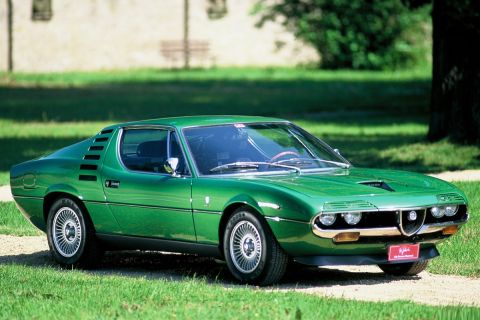
Alfa Romeo Montreal 1970
© Alfa Romeo
Montreal is a unique example in the history of Alfa Romeo, in that it was born not out of a search for the ultimate in performance, but through another area in which the brand excels: style.
In 1967, at the Montreal International Exhibition, the organizers chose Alfa Romeo from among all manufacturers to create a car that would express “modern man’s highest motoring expectations.” In Bertone’s studio, still a design genius, 29-year-old Marcello Gandini designed a low, elegant and aerodynamic coupe.
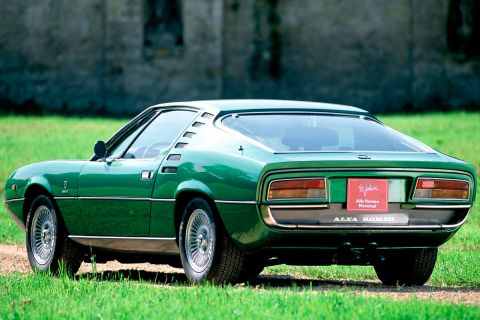
Alfa Romeo Montreal 1970
© Alfa Romeo
The design’s originality was largely due to the low front grille and the hood which partially covered the lighting lamps under a series of ‘eyelashes’, which improved aerodynamic performance, among other things. The steeply raked windshield, L-shaped doors and six air intakes on the rear pillars were some of the design elements that have evolved into a true automotive design legend.
In the production car, to make the V8 engine of the 33 Stradale possible, Gandini had to raise the bonnet, but without “damaging” the aesthetic perfection of his original creation.
Between 1970 and 1977, a total of 3,925 Montreals were built, and Alfa Romeo’s most iconic supercar continues to impress today with its futuristic approach to performance.
Alfa Romeo SZ / RZ (1989)
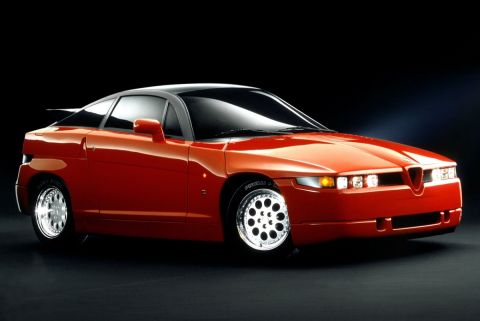
Alfa Romeo SZ 1989-1991
Alfa Romeo
SZ was built to turn heads – and that’s exactly what it did. Low, with a wedge-shaped shape and a very high line in the profile separating the glass surfaces from the metal surfaces (belt line), the SZ was the result of an ambitious program titled ES30 (“Experimental Sportcar 3.0 L”).
Production of the model—the first built using CAD/CAM (Computer Aided Design/Manufacturing) systems—was delegated to the Zagato chassis, whence the final name SZ (Sprint Zagato) came from.
The body kit housed the legendary “Busso” V6 engine that also powered the 75 3.0i Quadrifoglio Verde of 1987. Output was 207 horsepower, which reached the rear wheels via a 5-speed gearbox mounted ahead of the rear axle.
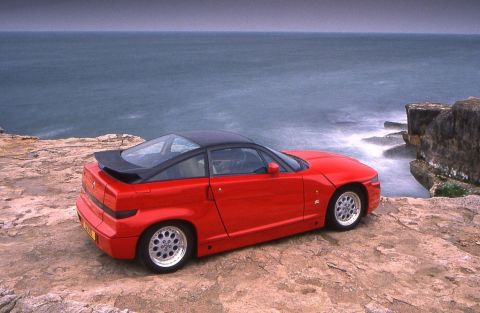
Alfa Romeo SZ 1989-1991
Alfa Romeo
Total production of nearly 1,000 units also included the equally distinctive and rare RZ (Roadster Zagato). The SZ / RZ is one of the most special models in the brand’s recent history, not only because of the performance or innovative technologies used during design and production, but because it still manages to challenge in every guise.
One can also see its influence to this day, through the new light signature of the 3 + 3 lighting structure that characterizes the Tonale, as well as through the new Giulia and Stelvio.
Alfa Romeo 8C Competition (2007)
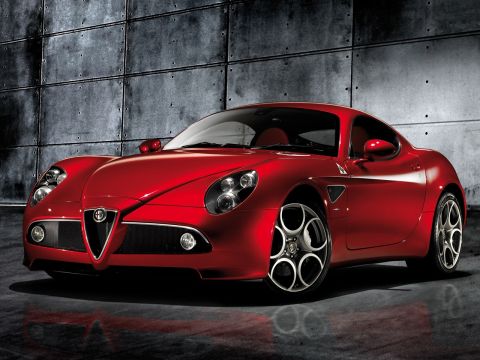
Alfa Romeo 8C Competition 2007
Alfa Romeo
The 33 Stradale’s legendary spirit in terms of aesthetics is more than evident in the 2007 Competition 8C, despite the years that separate it from its various bodywork. The 8C Competizione is a front- and rear-engined supercar, with power transmitted via transmission.
The unveiling of the 8C Competition prototype at the 2003 Geneva Motor Show left no one unimpressed, essentially forcing the brand to go ahead with a limited production run of the model designed by then Centro Stile Alfa Romeo boss, Wolfgang Iger.
Although initial orders topped 1,400, production was limited to just 500 units built at Maserati’s Modena factory – as would happen a few years later with the 4C.
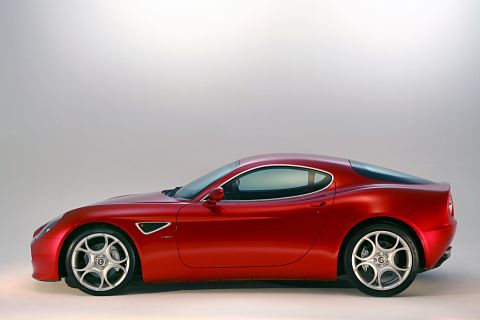
Alfa Romeo 8C Competition 2007
Alfa Romeo
The car was a mixture of exotic components. The frame came from Dallara, the braking system was Formula 1-inspired and Brembo’s signature, while Sparco made the seats out of gorgeous leather-covered carbon fiber.
Another point that fully justified the “supercar” designation was the atmospheric V8 engine with Ferrari’s signature. The 450 HP gave a top speed of almost 300 km/h and acceleration from 0-100 km/h in less than 4 inches.
The success of the 8C Competizione led to the creation of the open version, the 8C Spider which was built in 330 units. With matching mechanical parts, the performance was absolutely astounding, and despite a slightly lower top speed, the 8C Spider had no less charm than its closed sibling.

“Avid problem solver. Extreme social media junkie. Beer buff. Coffee guru. Internet geek. Travel ninja.”





More Stories
Underworld – step
10 floral perfumes we buy again and again | Marie Claire
Download now for free a shooting game reminiscent of Atomic Heart and Bioshock for your PC